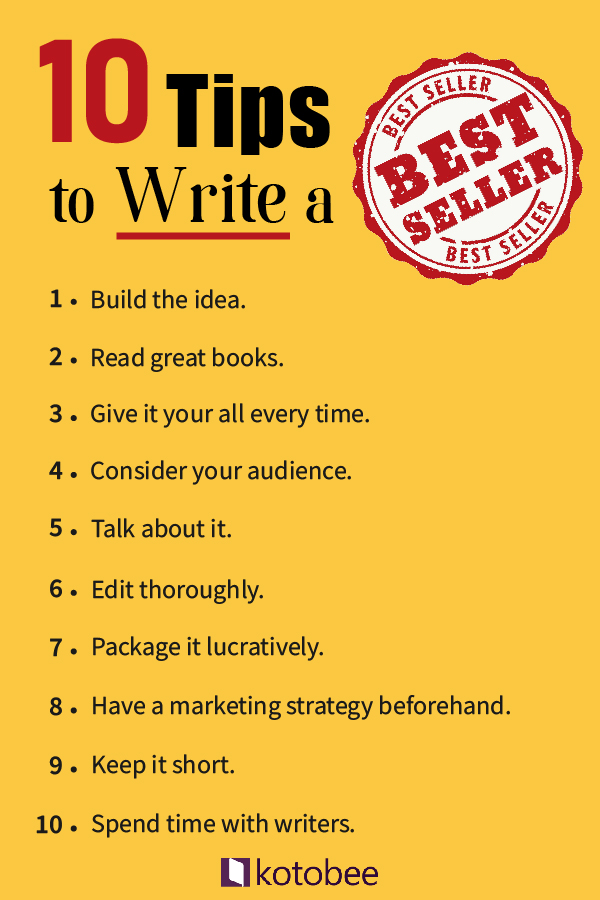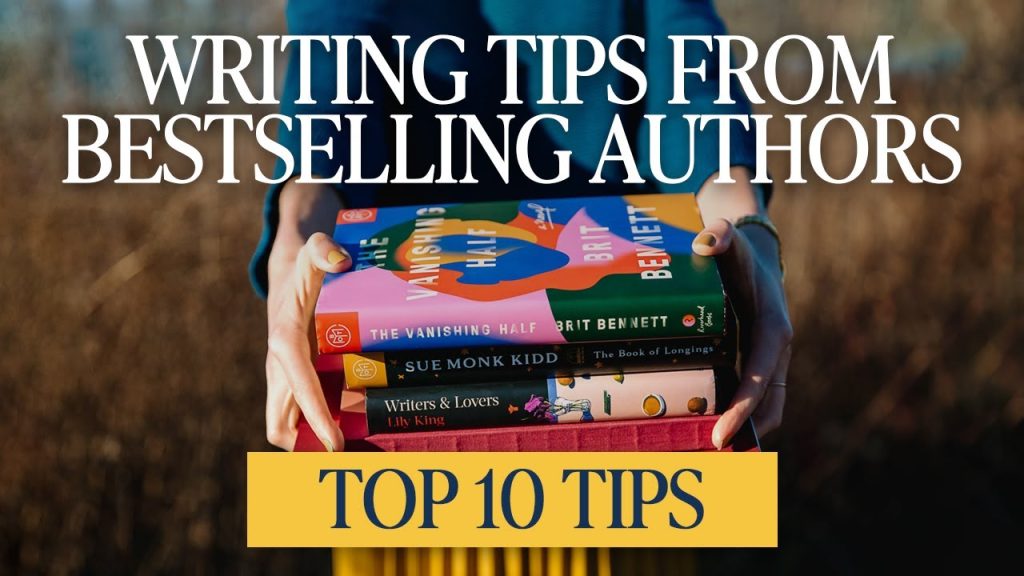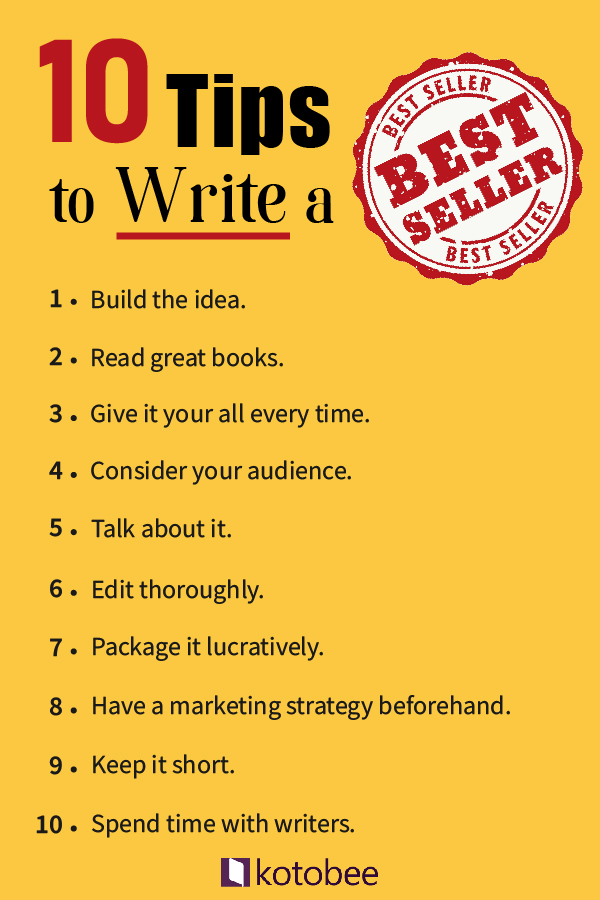In “Tactics from Bestselling Authors: How to Write a Book,” you will discover a treasure trove of insights from the most successful authors on how to pen a book that captivates readers. This article emphasizes the vital first step of choosing a book idea that fuels your creativity and shares tips on conducting the necessary research through reading genre-defining books. From outlining your story to crafting a compelling opening sentence, you will learn the essential elements of book writing. Additionally, you’ll gain valuable advice on goal-setting, finding the perfect writing space, and utilizing distraction-free software to maximize your productivity. With an equal emphasis on editing and publishing, this article equips aspiring authors with the knowledge needed to bring their stories to life and share them with the world.
Starting with a Book Idea

Choose a book idea you love
When starting the journey of writing a book, it’s crucial to begin with a book idea that you are truly passionate about. Choosing a subject or concept that excites you will help you maintain motivation and dedication throughout the writing process. Whether it’s a fantasy adventure, a gripping mystery, or a heartwarming romance, find a book idea that resonates with you and sparks your creativity.
Conduct research by reading genre-prominent books
Once you have settled on a book idea, it’s time to immerse yourself in the world of literature. By reading genre-prominent books, you can gain valuable insights into the writing techniques, storytelling structures, and character development that are successful in your chosen genre. Take note of what works and what doesn’t, identifying patterns and themes that can inspire and guide your own writing.
Explore various angles and themes for your idea
While having a solid book idea is a great starting point, it’s essential to delve deeper and explore various angles and themes within your chosen concept. Brainstorm different plotlines, character arcs, and subplots that can add depth and complexity to your story. Consider the underlying messages or themes you want to convey and how they can be woven into the narrative. By exploring different possibilities, you can uncover unique and compelling aspects of your book idea.
Outlining the Story
Create a detailed outline of the plot
Before diving headfirst into the actual writing process, take the time to create a detailed outline of your plot. This serves as a roadmap for your story, allowing you to see the overall structure and progression of events. Outline the major plot points, including the introduction, rising action, climax, and resolution. Map out the key moments and identify how they connect to drive the narrative forward.
Develop the main characters and their arcs
Alongside outlining the plot, it’s crucial to develop your main characters and their individual arcs. Take the time to understand their backgrounds, motivations, and goals. Consider how they will evolve and grow throughout the story, facing challenges and overcoming obstacles. Flesh out their personalities and ensure their actions and decisions align with their character traits. Well-rounded and relatable characters are key to engaging readers and creating a memorable story.
Establish the setting and key events
In addition to the plot and characters, the setting plays a vital role in your story. Whether it’s a bustling city, a small town, or a fantastical world, establish the setting with descriptive details that bring it to life. Consider how the setting influences the events and characters and how it can contribute to the overall atmosphere of the story. Additionally, identify the key events that will drive the plot and shape the narrative. These events should be strategically placed to create anticipation and keep readers engaged.
Writing the Opening Sentence

Craft a captivating and intriguing opening line
The opening sentence of your book is what hooks readers and draws them into your story. It’s your chance to make a strong first impression and captivate your audience from the very beginning. Craft a sentence that creates intrigue, raises questions, or introduces a compelling conflict. The opening line should leave readers wanting more and eager to continue reading.
Hook the reader’s attention from the very first sentence
Building on the captivating opening line, it’s important to hook the reader’s attention from the very first sentence. Consider starting your story with action, suspense, or a thought-provoking statement. Engage the reader immediately and make them emotionally invested in your story. The opening moments of your book set the tone for the rest of the narrative, so make them count.
Set the tone and mood of the story
In addition to grabbing the reader’s attention, the opening sentence should also set the tone and mood of the story. Consider the overall atmosphere you want to establish, whether it’s dark and mysterious, light-hearted and humorous, or something in between. Through careful word choice and imagery, create a strong sense of the story’s tone, signaling to readers what they can expect as they embark on this literary journey.
Completing the First Draft

Set realistic goals to complete the first draft
Completing the first draft of your book is a major milestone. To ensure progress, it’s important to set realistic goals that keep you motivated and on track. Break down the writing process into manageable tasks, such as writing a certain number of words or completing a chapter within a specific timeframe. By setting achievable goals, you can maintain momentum and steadily progress towards completing your first draft.
Establish a writing routine and stick to it
Consistency is key when it comes to completing a first draft. Establish a writing routine that works for you and stick to it. Whether you prefer to write in the morning, during lunch breaks, or late at night, find a schedule that allows you to dedicate regular time to your writing. Treat it as a commitment and prioritize it in your daily life.
Focus on quantity rather than quality at this stage
When working on the first draft, it’s important to prioritize quantity over quality. Allow yourself to write freely without getting caught up in perfecting every sentence. The primary goal at this stage is to get your ideas onto paper and establish the framework of your story. Embrace imperfections and trust that the editing stage will allow you to refine and polish your work.
Setting Achievable Goals

Break down the book writing process into manageable tasks
As you work towards completing your book, it’s essential to break down the writing process into manageable tasks. This helps prevent overwhelm and allows you to focus on one aspect at a time. Create a checklist of the major steps, such as outlining, writing, editing, and publishing, and then break them down into smaller, actionable tasks. By tackling each task step by step, you can maintain a sense of progress and stay motivated.
Set deadlines for each task or chapter
Deadlines can be powerful motivators. Set realistic deadlines for each task or chapter to ensure that you stay on track and meet your goals. Hold yourself accountable to these deadlines, treating them as you would any other important commitment. Breaking down the writing process and setting specific time targets can provide structure and help you stay organized.
Reward yourself upon achieving goals
Celebrate your achievements along the way to keep your momentum and motivation high. Set up a system of rewards for yourself upon achieving specific goals or milestones. These rewards can be as simple as treating yourself to your favorite beverage or taking a break to indulge in a hobby you enjoy. Acknowledging and celebrating your progress helps to maintain a positive mindset and reinforce your dedication to the writing process.
Finding a Good Writing Space

Create a dedicated and comfortable writing space
Having a dedicated writing space can significantly enhance your focus and productivity. Set up a designated area in your home or workspace where you can write without distractions. Ensure that it is comfortable and free from any physical discomforts that may hinder your progress. Customize your writing space with objects and elements that inspire you and make it a space that you genuinely enjoy spending time in.
Minimize distractions and noise
Distractions can be the greatest enemy of productive writing sessions. To minimize distractions, turn off notifications on your phone or computer, and consider using website blockers to prevent access to social media or other distracting websites. If noise is an issue, invest in noise-canceling headphones or play instrumental music to create a peaceful and focused writing environment.
Surround yourself with inspiration
Writing can be an introspective and solitary activity, but that doesn’t mean you can’t draw inspiration from your surroundings. Surround yourself with items that inspire you, such as books in your chosen genre, artwork, or quotations that resonate with your writing aspirations. Create a space that stimulates your creativity and fuels your imagination, making your writing sessions more enjoyable and productive.
Using Distraction-Free Writing Software
Utilize writing software designed to minimize distractions
If you find yourself easily distracted by the allure of the internet or other digital distractions, consider utilizing writing software specifically designed to minimize distractions. Programs such as Scrivener or FocusWriter provide a distraction-free writing environment by eliminating unnecessary features and presenting a clean and minimalistic interface. By using such software, you can channel your focus solely on your writing.
Explore popular options like Scrivener or FocusWriter
Scrivener and FocusWriter are two popular options for distraction-free writing software, and they offer distinct features catered to different writing needs. Scrivener offers a comprehensive organizational toolset that allows you to outline, write, and edit your manuscript all within one application. FocusWriter, on the other hand, creates a minimalist writing environment with customizable backgrounds and themes. Explore these options and find the software that best suits your preferences and writing style.
Enable full-screen mode to enhance focus
Enabling full-screen mode in your preferred writing software can further enhance your focus by eliminating any distractions beyond the blank page. Full-screen mode removes toolbars, menus, and other elements that can draw your attention away from your writing. By immersing yourself in a distraction-free environment, you can channel your energy solely into your creative process.
Editing the Manuscript
Take a break before starting the editing process
After completing the first draft, it’s crucial to take a step back and allow yourself distance from your work before diving into the editing process. Taking a break, whether it’s a few days or a couple of weeks, allows you to approach your manuscript with fresh eyes. By creating some mental space between yourself and your writing, you can better identify areas that need improvement and approach the editing process with renewed clarity.
Read the manuscript critically and revise for clarity
When editing your manuscript, it’s important to adopt a critical mindset and objectively evaluate your work. Read through your manuscript meticulously, paying attention to plot inconsistencies, character development, pacing, and overall clarity. Identify areas that may need more detail, dialogue that could be tightened, or sections that require reorganization. Your goal is to create a polished and coherent story that engages and captivates readers.
Consider hiring a professional editor for a thorough review
If you feel overwhelmed by the editing process or lack confidence in your ability to self-edit effectively, you may consider hiring a professional editor. A professional editor can provide a fresh perspective on your manuscript, identifying areas for improvement, and offering valuable feedback to enhance the overall quality of your writing. While it is an investment, the guidance and expertise of an editor can elevate your manuscript to a higher standard.
Preparing for Publication
Research different publishing options: traditional vs. self-publishing
Before you can publish your book, it’s important to understand the different publishing options available to you. Traditional publishing involves submitting your manuscript to literary agents and publishers, who handle the editing, marketing, and distribution of your book. Self-publishing, on the other hand, allows you to retain control over the entire publishing process, from editing to cover design to distribution. Research both options to determine which aligns best with your goals and preferences.
Create a marketing plan to promote the book
Regardless of the publishing path you choose, it’s crucial to create a marketing plan to promote your book. Start by identifying your target audience and the channels through which you can reach them. Develop a strategy that includes online and offline promotion, such as social media campaigns, author website, book signings, and collaborations with influencers or other authors. Remember, effective marketing can make a significant difference in reaching readers and garnering attention for your book.
Design an eye-catching book cover to attract readers
The saying “Don’t judge a book by its cover” may hold some truth, but the reality is that an eye-catching book cover can significantly impact a reader’s decision to pick up your book. Invest in a professional book cover design that aligns with your genre and effectively communicates the essence of your story. A visually appealing cover can draw potential readers in, making them more likely to explore your book further and ultimately make a purchase.
Publishing the Book
Prepare the manuscript for publishing in the desired format
Once you have completed the editing process and finalized your manuscript, it’s time to prepare it for publishing. This involves formatting the text according to the specifications of your chosen publishing platform, whether it’s a traditional publisher or a self-publishing platform. Ensure your manuscript is free from grammatical errors, has consistent formatting, and meets any specific guidelines provided by the publisher or platform.
Consider hiring a book formatter or use self-publishing platforms
Formatting can be a complex and time-consuming process, particularly if you have limited experience with it. To ensure a professional-looking result, consider hiring a book formatter who specializes in preparing manuscripts for publication. They can handle the technical aspects of formatting and ensure your book meets industry standards. Alternatively, self-publishing platforms often provide user-friendly tools and templates that guide you through the formatting process.
Upload the book to online marketplaces for readers to purchase
With your manuscript formatted and ready for publication, it’s time to upload your book to online marketplaces where readers can purchase it. Depending on your publishing choice, this may involve working with a distributor or going through a self-publishing platform. Ensure that your book’s metadata, such as title, author, description, and keywords, are optimized for searchability and effectively capture the essence of your book. By making your book available on various platforms, you increase its visibility and reach a broader audience.
